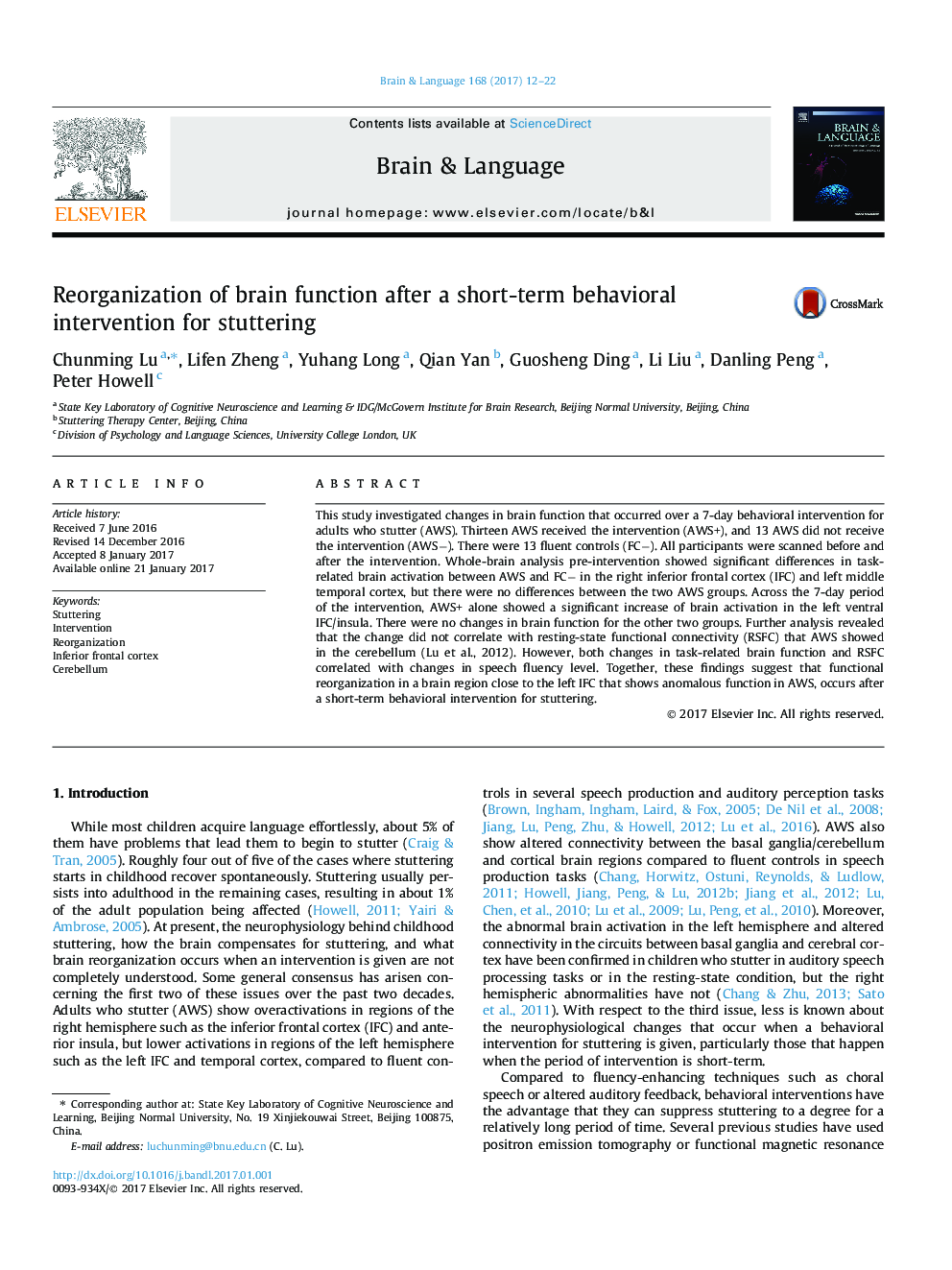| Article ID | Journal | Published Year | Pages | File Type |
|---|---|---|---|---|
| 5041347 | Brain and Language | 2017 | 11 Pages |
â¢Changes in the left vIFC's function were identified after a short-term behavioral intervention for stuttering.â¢Changes of brain function in the left vIFC significantly correlated with changes of speech fluency level in adults who stutter.â¢Distinct roles of task-related changes in the vIFC and task-independent RSFC changes in the cerebellum were clarified.
This study investigated changes in brain function that occurred over a 7-day behavioral intervention for adults who stutter (AWS). Thirteen AWS received the intervention (AWS+), and 13 AWS did not receive the intervention (AWSâ). There were 13 fluent controls (FCâ). All participants were scanned before and after the intervention. Whole-brain analysis pre-intervention showed significant differences in task-related brain activation between AWS and FCâ in the right inferior frontal cortex (IFC) and left middle temporal cortex, but there were no differences between the two AWS groups. Across the 7-day period of the intervention, AWS+ alone showed a significant increase of brain activation in the left ventral IFC/insula. There were no changes in brain function for the other two groups. Further analysis revealed that the change did not correlate with resting-state functional connectivity (RSFC) that AWS showed in the cerebellum (Lu et al., 2012). However, both changes in task-related brain function and RSFC correlated with changes in speech fluency level. Together, these findings suggest that functional reorganization in a brain region close to the left IFC that shows anomalous function in AWS, occurs after a short-term behavioral intervention for stuttering.
